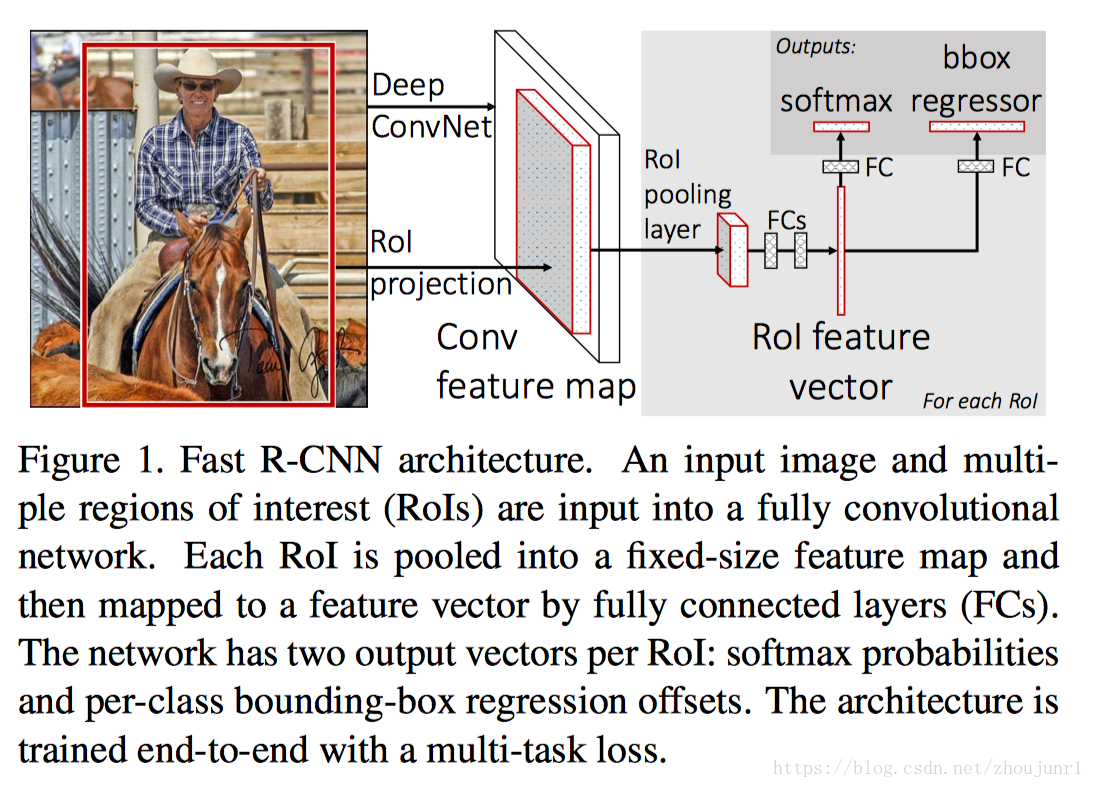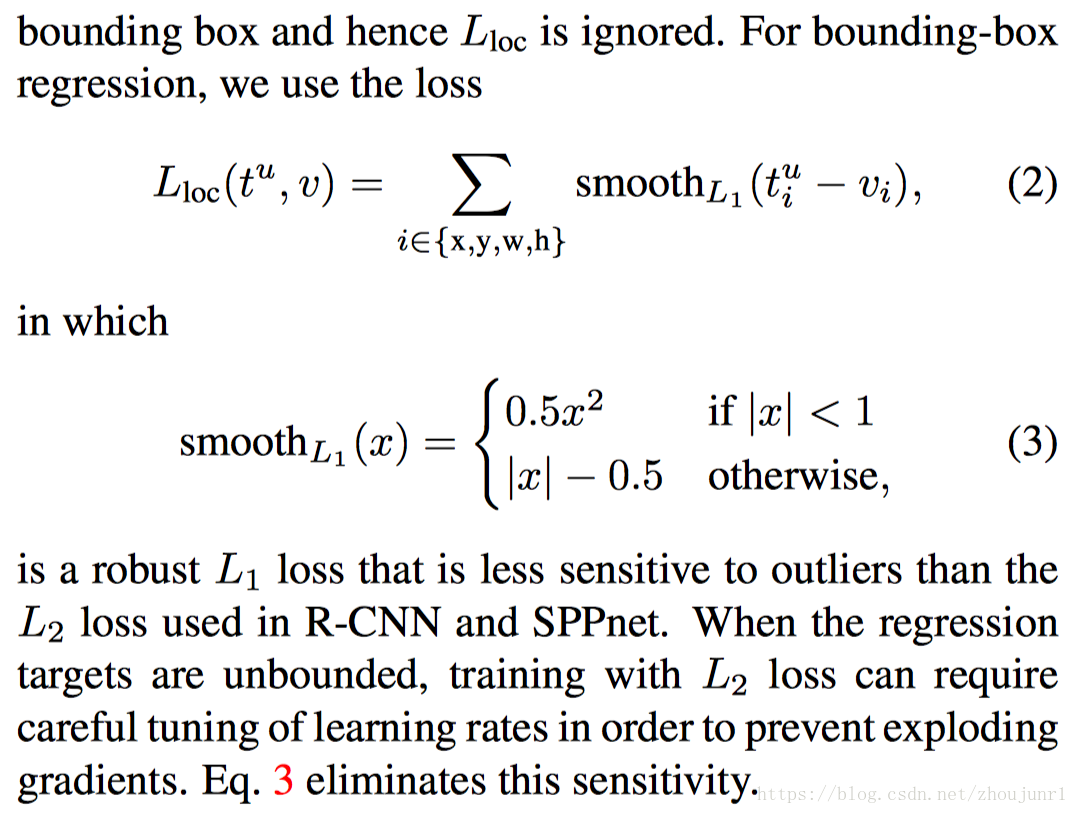Fast R-CNN
与RCNN SPPnet对比
- RCNN首先finetune,使用log loss。然后,使用SVMs来训练,最后,使用bounding-box regressor。
- 代价大
- 慢
Fast R-CNN 模型结构和训练

一张图片首先经过几个卷积层和池化层产生特征向量,然后 for each object proposal a region of interest(RoI) pooling layer extracts a fixed-length feature vector from the feature map.
然后输入一组fully connected层,最终 branch into two sibling output layers:
1. one that produces softmax probability estimates over K object classes plus a catch-all “background” class
2. another layer that outputs four real-valued numbers for each of the K object classes. Each set of 4 values encodes refined bounding-box positions for one of the K classes.
The RoI pooling layer
uses max pooling to convert the features inside any valid region of interest into a small feature map with a fixed spatial extent of H * W
Each RoI is defined by a four-tuple (r, c, h, w) that specifies its top-left corner(r, c) and its height and width(h, w).
max pooling h/H * w/W size window
Initializing from pre-trained networks
use a pre-trained network initializes a Fast R-CNN network, it undergoes three transformations
1. last max pooling layer is replaced by a RoI pooling layer
2. last fc layer and soft-max replaced with two sibling layers(a fully connected layer and softmax over K +1 categories and category-specific bounding-box regressors)
3. The network is modified to take two data inputs: a list of images and a list of RiOs in those images.
Fine-tuning for detection
In Fast R-CNN training, SGD mini-batches are sampled hierarchically, first by sampling N images and then by sampling R/N RoIs from each image.
* Multi-task loss *


未完








 Fast R-CNN改进了RCNN和SPPnet的效率问题,通过RoI池化层提取固定长度特征,再经全连接层进行分类和边界框回归。模型直接在预训练网络上初始化并进行端到端微调,采样策略采用分层采样以优化多任务损失。
Fast R-CNN改进了RCNN和SPPnet的效率问题,通过RoI池化层提取固定长度特征,再经全连接层进行分类和边界框回归。模型直接在预训练网络上初始化并进行端到端微调,采样策略采用分层采样以优化多任务损失。
















 1480
1480

 被折叠的 条评论
为什么被折叠?
被折叠的 条评论
为什么被折叠?








